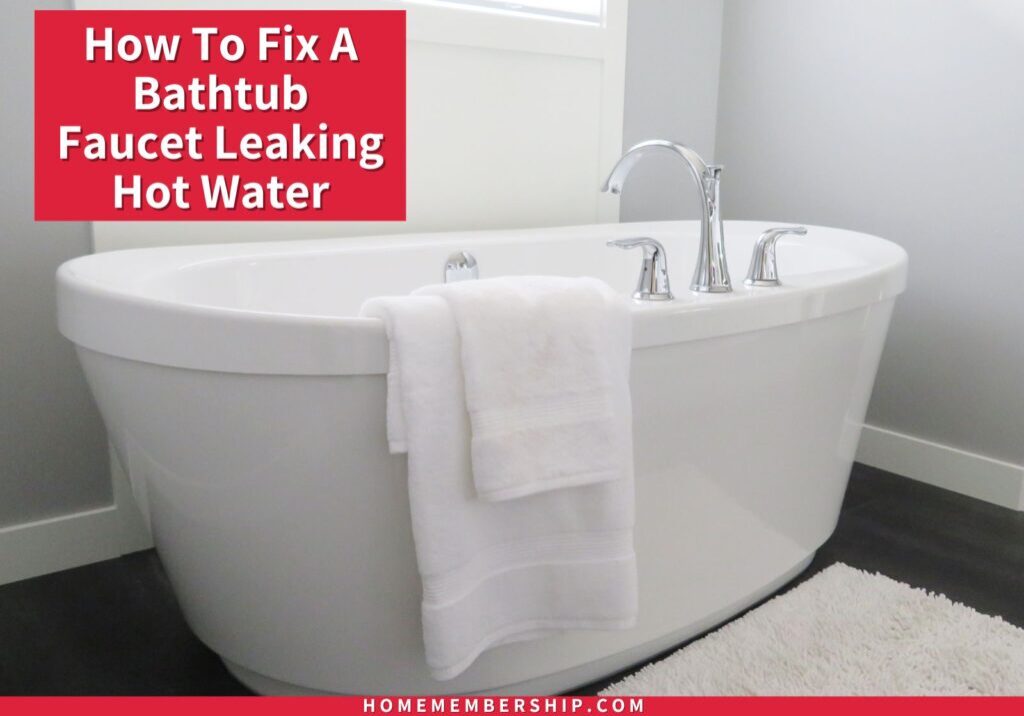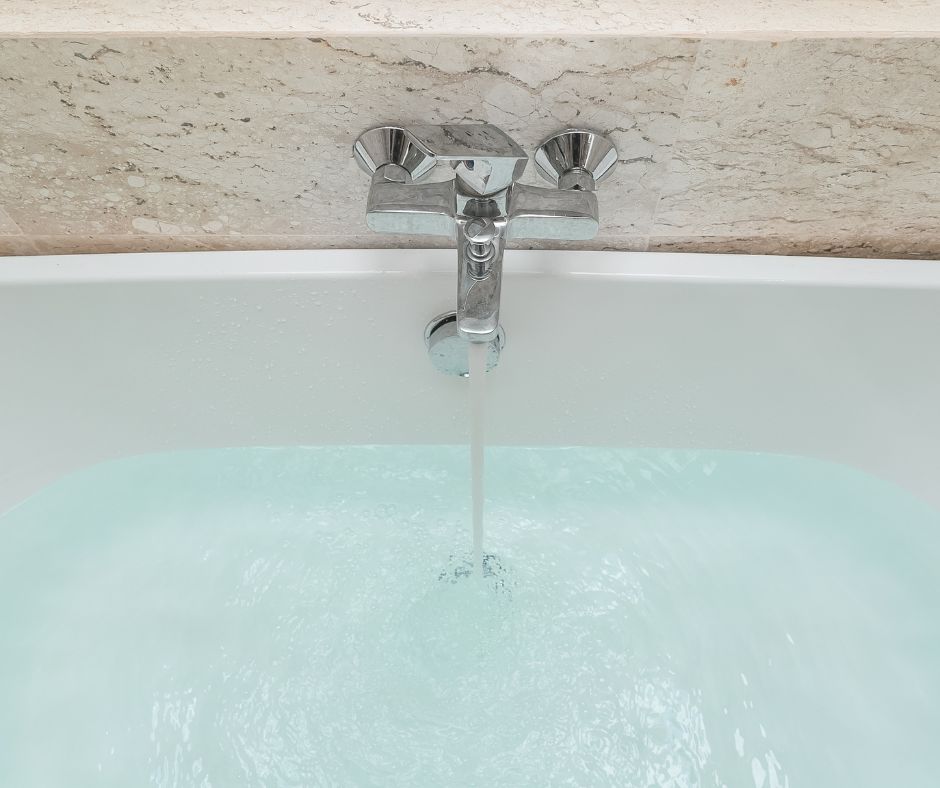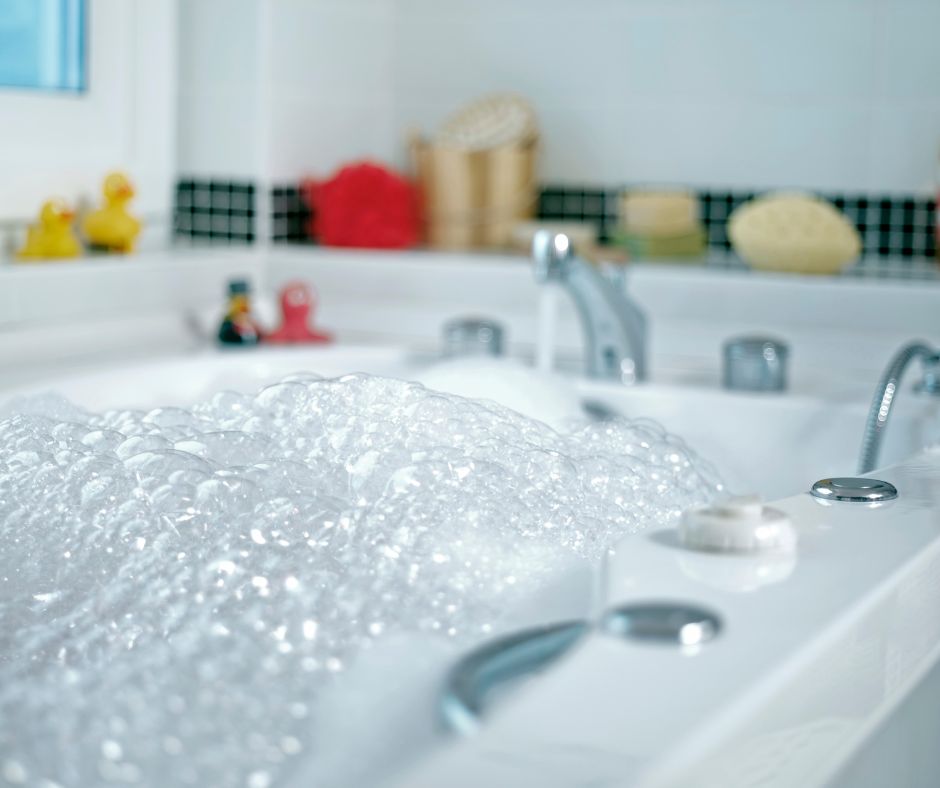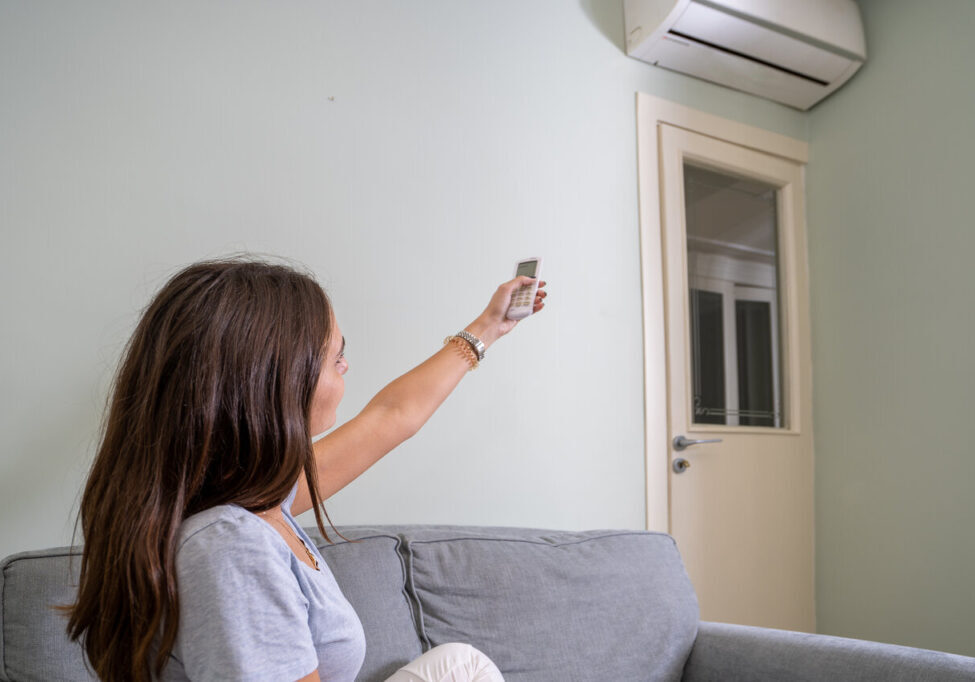How To Fix A Bathtub Faucet Leaking Hot Water

In this blog post, you’ll learn how to diagnose and fix the problem of a bathtub faucet leaking hot water.
Not only is a leaky bathtub faucet frustrating to listen to, but it also wastes gallons of water, resulting in a high-cost water bill and higher energy bills. Consistent dripping of hot water in your bathtub may even damage the finish of your tub over time. So, what can you do to fix it?
The good news is you may be able to fix the faucet or replace faulty parts without replacing the entire faucet. The first step is diagnosing the cause of your dripping bathtub faucet.
Here are some of the possible causes why your bathtub spout may be leaking.

Why Is My Bathtub Faucet Dripping Hot Water?
Worn Out Washer
Inside your bathtub faucet, a rubber washer helps create a watertight seal when the tap is turned off. Over time, this washer can deteriorate due to regular use, causing hot water to drip from the faucet. A worn-out washer is one of the most common reasons for a dripping bathtub faucet.
Loose Or Damaged Valve
Another common problem with bathroom faucets is having a loose or damaged valve that leads to consistent dripping. The valve within your faucet controls the flow of hot and cold water. If it becomes loose or damaged, hot water may escape even when the tap is turned off.
High Water Pressure
While you might love having more water pressure for your showers, it can put extra strain on your plumbing fixtures, including your bathtub faucet. This increased pressure can cause hot water to escape through small openings, leading to a dripping faucet.
Sediment Build-up
Another common cause of faucet leaks is mineral deposits and sediment build-up, which will obstruct the faucet’s inner components. If this is the possible reason for having a leaking bathtub faucet, it will be a good idea to clean and descale the build-up.
Aging Faucet Components
Lastly, like any household item, faucets have a lifespan. If your bathtub faucet is old and has seen better days, it may be time for a complete replacement.

How To Narrow Down To The Problem
As mentioned above, a common culprit for a leaking bathtub faucet is due to sediment build-up. That’s why cleaning and descaling any build-up is a good idea to see if that resolves the problem before you spend time disassembling your faucet.
Steps to Descale a Bathtub Faucet
- Remove Aerator or Showerhead (if applicable): If your bathtub faucet has an aerator or a showerhead, remove it using an adjustable wrench or your hand. These parts are more prone to scale build-up. If you’re dealing with a showerhead, you can soak it separately.
- Create a Vinegar Solution: Fill a bucket or plastic bag with white vinegar. If you’re using a bag, secure it to the faucet and ensure the vinegar fully covers the parts.
- Soak the Affected Parts: Place the faucet’s aerator, showerhead, or any other affected parts in the vinegar solution. Allow them to soak for at least a few hours or overnight if the scale build-up is severe. The vinegar will help dissolve the mineral deposits.
- Scrub and Rinse: After soaking, use a soft-bristle brush to scrub away any remaining scale on the parts gently. Rinse them thoroughly with water to remove the vinegar and loosened scale.
- Reattach Parts: If you removed the aerator or showerhead, reattach them to the faucet using an adjustable wrench or your hand. Ensure they are securely in place.
- Watch For Dripping: Once you’ve done these steps, monitor the bathtub faucet to see if it continues dripping. If it doesn’t leak, congratulations, you’re done. But if it does start dripping again, you can move on to the next step.
Disassembling Your Faucet
If you’ve descaled the build-up on your faucet, but the dripping continues to be a problem, you’ll need to disassemble your faucet.
- Gather The Necessary Tools – While each type of faucet will need different tools to disassemble the parts, you likely won’t need any special tools. Most can be taken apart with simple tools such as an adjustable wrench, flathead screwdriver, or Phillips screwdriver.
- Turn Off The Water Supply – Locate the water shut-off valve in your bathroom or the utility area and close it to prevent water from flowing. If you don’t have shut-off valves for your bathroom, you can also shut off the water main that comes into your home.
- Remove the Faucet Handle – Depending on your faucet’s design, a decorative cap or cover may hide the screw securing the handle. Use a screwdriver to pry off this cap gently. Once the screw is accessible, use the appropriate screwdriver (Phillips or Flathead) to remove it. Carefully lift off the faucet handle. Some handles may be secured with a set screw, while others may be threaded onto the faucet stem.
- Expose the Valve Assembly – You’ll typically find a decorative escutcheon or cover plate after removing the handle. Remove it by either unscrewing or prying it off, depending on the design. Once the escutcheon is removed, you’ll see the valve assembly.
- Remove the Valve Cartridge or Stem (if applicable) – For some faucet types, you may need to remove the valve cartridge or stem to access the internal components. Use an adjustable wrench to unscrew the valve cartridge or stem carefully. It may require counterclockwise or clockwise rotation, depending on the faucet model. Be gentle during this step to avoid damaging the valve.
- Inspect the Valve Assembly – Look for visible signs of damage, wear, or leaks. Check for loose parts, cracks, or corrosion. Also, take note of the type of faucet you have, as this will determine the specific components you need to inspect.
If you aren’t sure what is causing your leak after disassembling your faucet, it may be a good idea to call a professional plumber. They will have the experience, tools, and replacement parts needed to repair. But we will cover this more later in the blog post.

Where To Find Replacement Parts
The good news is whether you need to replace a faulty cartridge, get a new washer, or replace the valve stem, you should be able to find most, if not all, of the parts you’ll need at your local hardware store, including Home Depot or Lowe’s. You may even be able to find the necessary replacement parts at Target.
If you aren’t sure what the part you need to buy looks like, research it before you go shopping so you know what you’re looking for when you get to the store.
Making The Repair To Your Leaking Faucet
Replace Worn-out Washers or O-rings
- Remove the handle and valve assembly to access the old washers or O-rings.
- Carefully replace the worn components with new ones that match the size and type.
- Apply plumber’s tape or Teflon tape to threaded connections if required.
- Reassemble the faucet.
Replace a Faulty Valve Cartridge or Stem
- Remove the old valve cartridge or stem.
- Insert the new cartridge or stem, ensuring it is properly aligned.
- Tighten it gently with an adjustable wrench.
- Reassemble the faucet components.
Address Mineral Deposits and Scale
- Clean the affected parts if you’ve noticed mineral deposits or scale build-up in the faucet components.
- Soak the parts in white vinegar to dissolve the deposits.
- Use a soft brush to scrub away any remaining scale.
- Rinse the parts thoroughly with water before reassembling them.
Reassemble the Faucet
- Reverse the disassembly steps to reassemble the faucet.
- Make sure all components are correctly aligned and tightened, but avoid over-tightening.

When To Call A Professional
If your bathtub faucet still drips after following all the steps mentioned above, it might be time to call in a professional plumber. Plumbing systems can be complex and require specialized tools and knowledge to fix. Here are some scenarios when it’s best to seek professional help.
- Persistent Leak: If the faucet continues to drip after you’ve replaced components and reassembled it correctly, there may be a more significant issue within your plumbing system that a professional needs to diagnose and address.
- Inadequate DIY Experience: If you’re not confident in your DIY skills or don’t have the necessary tools, it’s wise to leave the repair to a qualified plumber. Attempting complex repairs without the right expertise can lead to more significant problems, including potential water damage.
- Unsure Of The Cause Of The Leak: If you’ve disassembled your faucet but can’t determine the exact cause, it may be wise to get a professional opinion.
- Complex Faucet Type: Some modern faucets have intricate designs and proprietary components that are best handled by a professional who understands the specific mechanics of your faucet.

Are Bathroom Faucet Repairs Included In Home Warranty?
If you have a home warranty policy, you may wonder if the repairs are covered under your warranty. The answer depends on your specific home warranty policy.
Typically, home warranties cover the repair of major home systems and appliances, including plumbing. However, the coverage can vary, and exclusions or limitations may exist.
If you have a home warranty, it’s essential to review the policy details and contact your warranty provider to inquire about coverage for your leaking bathtub faucet. They can provide information on what repairs are covered, any deductibles or service fees, and how to initiate a service request.
If you have a warranty with Home Membership, you can find more information about the plumbing coverages here.
A dripping hot water faucet in your bathtub can be an annoying and wasteful problem, but it’s one that you can often diagnose and fix with the right tools and knowledge. You can save money and water by understanding the potential causes of the leak, descaling and cleaning your faucet, and following the steps to disassemble and repair it.
Remember that if your DIY efforts don’t resolve the issue or are uncomfortable with the repair process, it’s always a good idea to consult a professional plumber. They have the expertise to diagnose and fix complex plumbing problems and can ensure your bathtub faucet is leak-free once again.
With the right approach and patience, you can enjoy a fully functional and leak-free bathtub faucet, saving both water and money.
The good news is you may be able to Fix A Bathtub Faucet Leaking Hot Water or replace faulty parts without replacing the entire faucet.
Check out our tips about the best shower cleaners!



